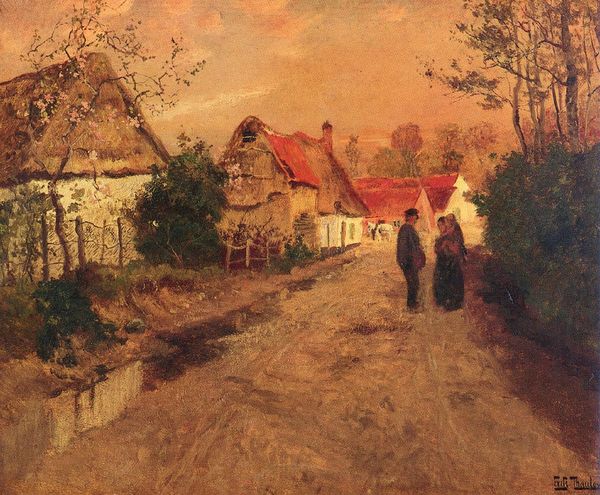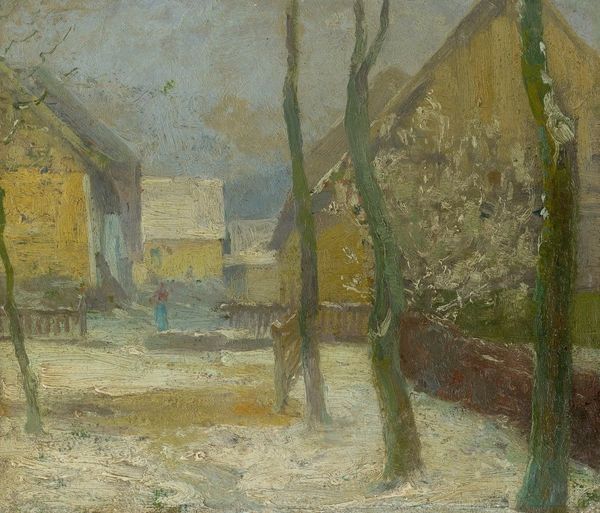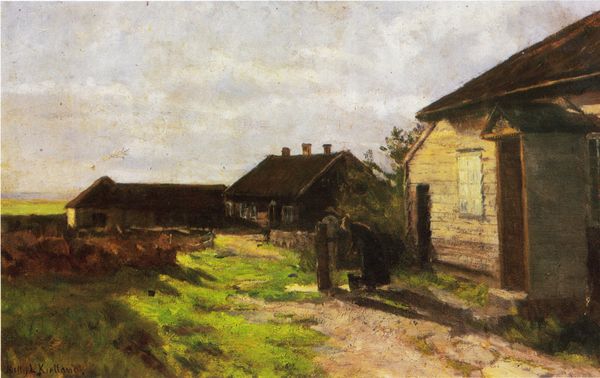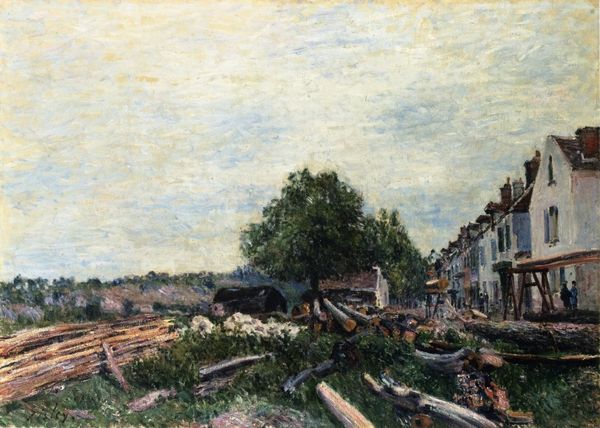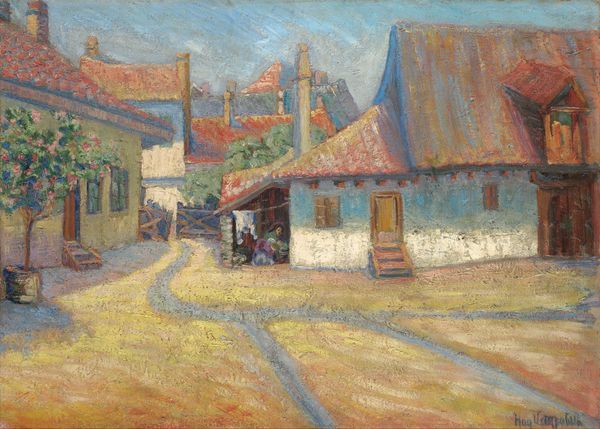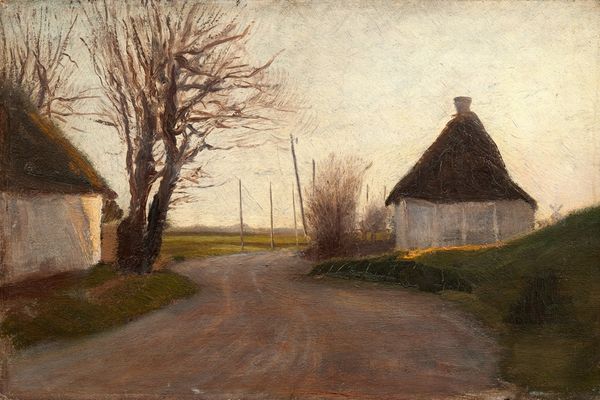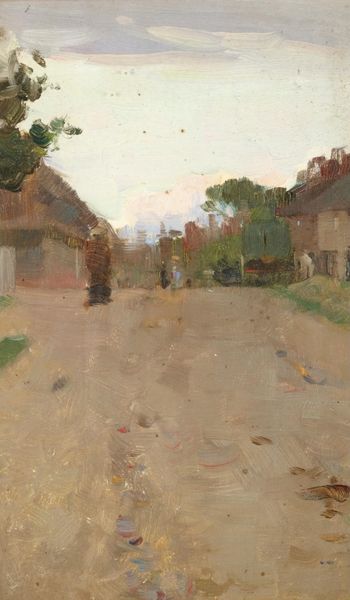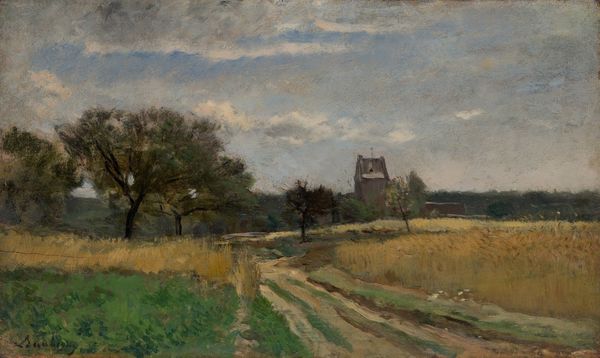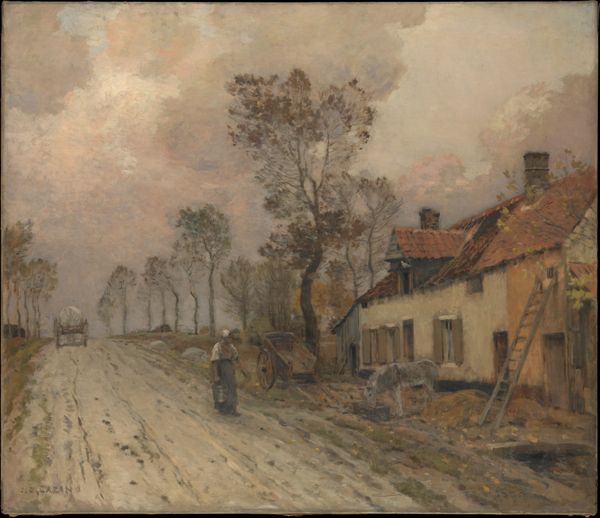
painting, plein-air, oil-paint, canvas
#
painting
#
impressionism
#
plein-air
#
oil-paint
#
landscape
#
impressionist landscape
#
oil painting
#
canvas
#
genre-painting
#
modernism
Dimensions: 48 cm (height) x 67.5 cm (width) (Netto)
Editor: So, here we have "Tidlig forårsdag i Glostrup", or "Early Spring Day in Glostrup", painted by Albert Gottschalk in 1887. It’s an oil on canvas. It’s got a really subdued, almost melancholic atmosphere, wouldn’t you say? What strikes you about it? Curator: The muted tones and the depiction of rural life are interesting when we consider the rapid urbanization occurring across Europe at that time. Artists like Gottschalk often idealized these pastoral scenes, perhaps as a commentary on the alienation caused by industrialization. Notice the position of the viewer as well - outside of the main activity. Do you think that position plays a role? Editor: That's a good point, the viewer is positioned outside looking in, almost as a spectator to that disappearing way of life. What do you make of his Impressionistic technique, then? Is he making a statement through brushstrokes? Curator: Absolutely! The loose brushwork typical of Impressionism wasn't just about capturing light; it was a rejection of academic painting, which often served the interests of the powerful. In choosing Impressionism, artists aligned themselves with a progressive, even revolutionary, artistic and political stance. So, Gottschalk wasn't simply painting a landscape; he was subtly engaging with the social and artistic debates of his time. Editor: I never thought of it that way – that even technique can hold such political undertones! It provides an entire new understanding. Curator: Precisely. It makes you think differently, no? Every detail reflects and informs the broader narrative of a moment.
Comments
No comments
Be the first to comment and join the conversation on the ultimate creative platform.

